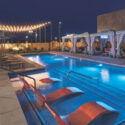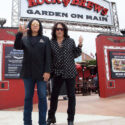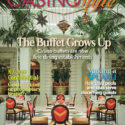The American Gaming Association just released its annual the “State of States” report, formalizing many of the trend specifics the industry has been expecting: 2008 gaming revenues across the country showed a notable 4.7 percent decline from the record-setting year of 2007, with further decreases ongoing this year.
Although this information should not surprise anyone who has been monitoring the gaming industry of late, it is somewhat alarming that many operators and developers are just now realizing that their food and beverage programs must be realigned to respond to these shifts. The good news is that it’s not too late to make significant improvements to the bottom line.
When consumer spending and gaming revenues decline, ancillary and amenity earnings fall as well. The Innovation Group has seen spending on food and beverage programs drop over the past year an average of 8 percent to 12 percent, a result of consumer downgrades to both restaurant and general beverage dollars. The spending decrease has been felt most by the upscale segment of F&B programs as current gamers and patrons to casino resorts are spending more in the midscale and casual dining segments.
Unfortunately, capture rates are mirroring these declines as well. The F&B capture rate is defined as the number of food and beverage customers divided by the number of total patrons to the property. In existing casinos, including both large-scale resorts and smaller local facilities, the Innovation Group has tracked an average 4 percent drop in food and beverage facility capture rates this year, bringing the overall rate to the low 30s. Comparatively, since 2003, previous capture rates within urban casinos had been steadily climbing toward 37 percent, and even up to 43 percent for resort-style properties. For existing and future owners alike, the potential impact on seat demand should be obvious.
The most successful operators understand the importance of flexibility and responsiveness in such an environment. With that in mind, below are various operational strategies and development goals that your property can apply to capitalize on the changing spending patterns that impact casino F&B.
The Price-Value Relationship
Along with the drop in spending, gamer habits and expectations have shifted. The current gamer and resort patron is more mindful of the dollar, and expects the price-value relationship to be very high. In fact, in some cases, the patron actually wants that value relationship to be higher than before the decrease in spending.
Accordingly, any current F&B assessment must consider such responses as the introduction of value-conscious menu items, closing down certain restaurants during off-peak days and times and focusing on service and training to increase consistency. In addition, developers of new casinos need to pay particular attention to sizing parameters, capture rate declines and consumer desires, and create plans that allow for phased expansions within the F&B program.
How About A Free Lunch?
It’s interesting to note that players’ expectations for comps have (reasonably) been lowered, with patrons demonstrating that they are more accepting of fewer comps or a lower value thereof. This means there’s an opportunity for those properties that can afford it to maintain an aggressive comp strategy.
It also means that since consumer expectations have changed, food comps have taken on a greater significance. Until recently, buffet comps were taken for granted. Now buffet and other casual food comps represent an opportunity to grow market share through an aggressive comp strategy. It will be important to analyze the costs associated with the comp program to make sure it is financially viable before implementing this strategy.
Maximize Hours of Operation
For existing operators in particular, it’s important to analyze and potentially alter several key aspects within their respective food and beverage programs.
One of the first and easiest “fixes” is to analyze performance in order to identify opportunities to close certain restaurants during off-peak dining days and times. The main goal is to reduce the labor burden. For example, a reduced demand within the casino may allow for an upscale restaurant or fine dining restaurant to go dark Sundays, Mondays and Tuesdays. By closing or reducing the hours of the restaurant during these typically low-volume evenings, a potential operator can utilize a smaller staff while still maintaining full-time status for the employees.
Certain caveats are important to consider when closing a restaurant for off-peak meal periods. It’s important to make sure that the segment mix within the casino remains balanced. If the steakhouse or fine dining outlet is closed on specific days, it will be necessary to offer a dining experience for the potential steakhouse customer in another outlet during that time frame. In large programs, this goal can be accomplished by staggering the closing days for the fine dining and upscale restaurants. This will create the balance needed within the overall program so that potential high-spend gamers and patrons have an outlet to dine in, all while allowing the operator to reduce labor spending.
In smaller operations-often defined as those with only two to three outlets-menu modification can be made in the midscale or casual restaurant in order to offer certain menu items from the closed restaurant. The MonteLago Casino in Lake Las Vegas, a resort with three restaurants, recently achieved an example of this. The operators chose to close the Portofino Steakhouse during off-peak days and broaden the menu at the midscale restaurant with popular steakhouse items. This allowed frequent patrons of the steakhouse and higher-spend gamers to have a fine dining experience outside the steakhouse. Also, by closing Portofino’s, MonteLago at Lake Las Vegas was able to decrease labor and food costs and position itself better to weather the downturn in spending.
Continue to Emphasize Value
Another core aspect is to offer more price-conscious or higher-price value relationship items on menus. In order to capture the widest assortment of customers, it’s imperative for higher-end outlets to add more cost-sensitive menu items. This could include cheaper cuts of meat or lower-priced seafood items, although it’s important to not lose overall quality while utilizing lower-cost products on the menu. Remember, consumers are hypersensitive to quality and value at this juncture.
By broadening the menu options, upscale restaurants should be able to lower prices on certain menu items. While this could reduce overall check averages, it could also increase revenues through higher volume sales.
Think Out of the Box
Operators should also consider expanding venues that highlight cost-effectiveness and convenience, including the successful grab-and-go concept. Grab-and-go typically entails pre-made sandwiches and salads offered at a lower price point. As check averages within casinos decline, there’s an opportunity to expand grab-and-go offerings to capture the “spending less” market.
Traditionally, grab-and-go outlets have not included high-profile brands, but with the shifts in consumer spending, more and more casinos are attracting lower-spend consumers with higher-profile value brands and concepts. While branding opportunities have been associated primarily with upscale and steakhouse segments until now, operators now have greater options for service brands related to the grab-and-go segment. On top of retaining existing customers, the new grab-and-go branding opportunities will attract new customers looking to spend less but still get a quality product.
On top of branding opportunities, operators now have the ability to lease out grab-and-go space to outside quick-service operators. Additionally, the property can form joint ventures and purchase franchises with successful concepts to help grow the expanding market and reach a higher market share potential.
Train the Staff You Rely On
Perhaps most importantly, as business and demand slows, existing operators can expand server training. Consumers are looking for a higher price-value relationship, so it’s important to maintain high customer service standards and consistency in both the front and back of house. During these reduced demand times, operators should focus on customer satisfaction training, employee cross-functionality and product education. This is a prime tool to utilize to enhance the guest experience and build morale within the employee base.
One important tool for owners to consider is internal educational and training activities on F&B products and sales techniques. These activities can range from specific alcohol classes with on-site vendors to sales psychology classes with a local college professor. By providing free on-site education to the employee, he or she gets the chance to learn in an environment that will directly affect check averages and tips.
As restaurants trim labor costs because of shrinking revenues, cross-functionality training becomes even more prevalent. Because operating volumes are down, the slower pace of the restaurant may allow an operator to cross-train a bus person to become a server, or a cashier to become a buffet attendant. Creating multi-purpose food and beverage employees will allow operators to be flexible with staffing. In turn, this will allow a large multi-unit outlet facility to utilize employees across all the outlets, thus reducing overalls staffing needs and numbers.
One potential downside is negative employee motivation. Operators must walk a fine line to keep employees happy and motivated as they work in different restaurant environments. For example, it might be difficult to cross-train a fine dining captain to work in the midscale restaurant, but a bus boy in the midscale restaurant might be easily trained to be a back waiter in the fine dining location.
The Beverage Department
Interestingly, beverage sales have not seen the same decreases as food. Revenues are down 3 percent to 5 percent over the same period that food sales have decreased close to 10 percent. This is partially due to the fact that consumers tend to drink more during recessionary times.
Even so, consumers are trading down on beverage choices, spending more proportionally on beer and less expensive alcohols and ordering more well and call brand liquors than premium and super-premium brands.
Traditionally, the margin on the call and well brands is higher that premium alcohols-a blessing in disguise for F&B operators. In restaurants, wine sales have shifted from high-priced bottles from traditional wine-producing areas to value plays in the non-traditional, new-world wine regions. Additionally, operators are showing a trend to more wine-by-the- glass sales. For both restaurants and beverage-centric outlets, this shift has changed the way beverage revenues are coming into the property.
The midscale and upper-midscale segments of the F&B plan are positioned well to capitalize on this shift in beverage spending. These styles of restaurants have the ability to expand their wine-by-the-glass offerings and also modify the wine lists to include value wines from regions such as Chile, Argentina, South Africa and New Zealand/Australia. By increasing these areas of the wine list and properly training the staff on sales techniques, these outlets should see an increase in wine sales.
Of all the changes listed above for both the restaurant and beverage departments, the beverage changes will be the easiest and cheapest strategies to employ. Also, because margins are traditionally higher within the beverage department, these changes will have quick and direct affects to the bottom line of the department.
On the Boards: Rules for Projects Not Yet in Operation
Prior to the downturn, the operator’s strategy was: build it big, make it famous, charge a lot and the people will come. The current trend is to build more midscale and casual offerings with a high price-value relationship. For developers, the key for any food and beverage program is right-sizing. Just as casinos create a master plan for expansion, there needs to be a food and beverage master plan. As amenity and ancillary spending decreases, the food and beverage outlets will be used less. Developers must modify forecasts and create a value-sensitive F&B experience.
Be Ready
A corollary to that strategy is the ability to phase in new products quickly. Once spending increases, it will be important to integrate new outlets into the existing plan without a long development or lag time. It’s important to constantly monitor the program and be ready to adjust to changing spending habits. Your F&B master plan should be built around the ability to expand or repurpose food and beverage venues quickly as amenity and ancillary spending increases.
This is an important consideration for existing operators, but it applies to planned facilities as well. One way for properties under construction to achieve this is to consider shelling out planned F&B areas and applying final finishes at a later date (when demand increases). Whether the building program includes a shelled-out space or leaves room for development is up to the individual developers and their resources. There are some inherent capital costs and risks associated with this approach, but as spending increases, the casino will be at a distinct time advantage to capitalize on the increased spending habits.
In either case, the current trend is toward midscale and casual seats and away from more elaborate fine dining options. The past 6 to 12 months have clearly shown that gamers are spending less on meals in casinos, but still demand a high quality food and beverage experience. By building more midscale yet still high quality seats, the casino will be able to capture a higher percentage of gamers within the food and beverage program. Appropriate size and positioning is the key.
Looking Forward
Industry-wide, F&B venues have taken a hit. But it doesn’t have to continue. Every property should aim to minimize the potential loss and capitalize on both the current trends and potential upside, including a focus on midscale and casual offerings sized appropriately for lower capture rates. By creating a higher price-value relationship, training and educating staff, and analyzing potential operational hours, existing casino operators will be better positioned to weather the current downturn.













